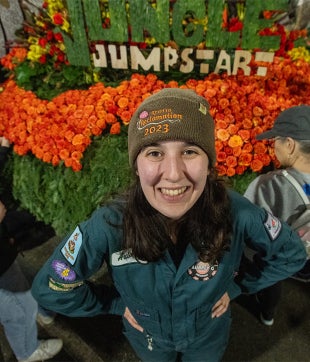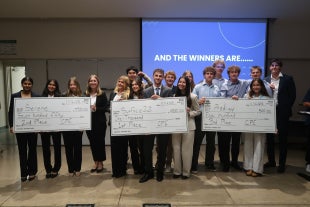New Livestream Video of Wild Rattlesnake Den Now Available as Part of Community Service Project Led by Cal Poly
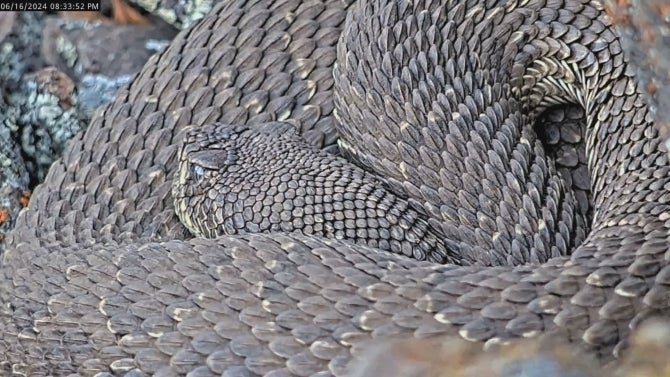
Contact: Emily Taylor
805-440-6288; etaylor@calpoly.edu
Live footage of Colorado mega-den is available to the public online, and the project’s California camera is live again
SAN LUIS OBISPO — Cal Poly rattlesnake researchers have installed a new camera system at a large den, or “mega-den,” of rattlesnakes in Colorado that livestreams footage to YouTube. The den is a rare habitat attracting hundreds of rattlesnakes because of its geologic features that provide snakes with hiding places and shelter from the elements.
The public can tune in anytime to RattleCam.org to watch dozens of pregnant rattlesnakes basking, interacting and, later this summer, caring for their pups. Viewers can watch closely to witness rare events such as predators visiting the den attempting to attack the rattlesnakes and the mass emergence of thirsty snakes to drink raindrops collected on their coiled bodies. The best times to watch are in the morning and early evening.
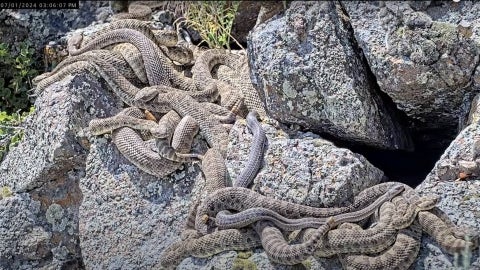
The den is in a remote, undisclosed location on private land in northern Colorado. The high-tech, solar-powered camera system is funded largely by donations. The technology was designed and installed by faculty and technicians from Cal Poly’s Bailey College of Science and Mathematics. Researchers previously shared time-lapse photos at the site on the Zooniverse community science website, but the new system offers enhanced viewing through a live video feed.
The livestream is part of Project RattleCam, a community science project in which the public helps scientists study rattlesnakes. The project also has deployed a live-streaming camera at a smaller rattlesnake den in California for the past three years during warmer months when the snakes emerge from sheltered habitats. The California camera went live again July 11 and is now available for public viewing.
“This livestream allows us to collect data on wild rattlesnakes without disturbing them, facilitating unbiased scientific discovery,” said Emily Taylor, project lead and a Cal Poly biological sciences professor. “But even more important is that members of the public can watch wild rattlesnakes behaving as they naturally do, helping to combat the biased imagery we see on television shows of rattling, defensive and stressed snakes interacting with people who are provoking them.”
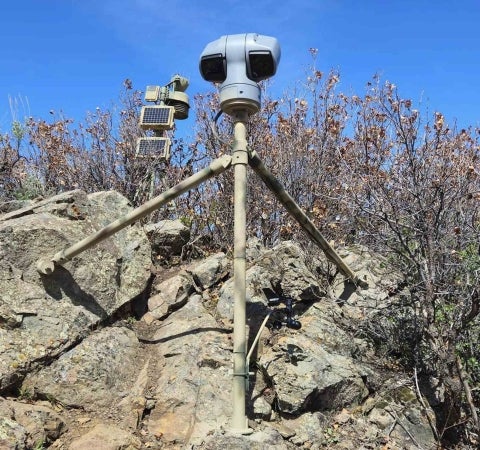
Public viewers of the footage have reported novel interactions such as nighttime visitors, Taylor said, including rodents scurrying by the sleeping snakes. These observations are reported in the YouTube live chat as well through submission form posts. Another key way that viewers are helping scientists is by identifying snakes by their scale patterns, which are unique to individuals, like human fingerprints.
Taylor expects rattlesnake pups to be born starting in August and to stay at the den with their mothers until male snakes return in September from summer hunting grounds for hibernation. After that, the camera will be turned off for the winter and then resume the following spring.
“We hope to eventually install cameras on snake aggregations (group gathering) all over the world to help us better understand the behaviors of these complex, social animals,” Taylor said.
The camera feed is used for dedicated Cal Poly student researchers. Using livestream snapshots overlayed with data collected from a cellular weather station at the Colorado site, biological sciences master's degree student Max Roberts (from Woodland Hills, Calif.) is studying how the snakes behaviorally maintain their body temperature, avoid sunburn, and conserve water.
As well, a team of Cal Poly Liberal Studies undergraduate students training to become teachers has designed a curriculum called "RattlEd" to engage elementary school students using the Project RattleCam livestream.
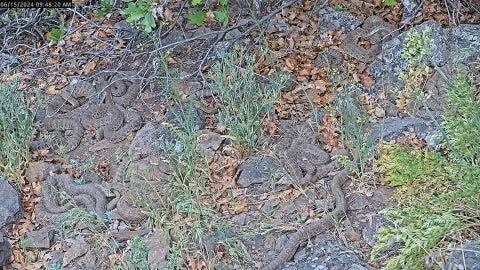
“Third- through fifth-graders will investigate their own scientific questions while watching the snakes with supplemental art, science, and engineering activities to support their learning,” said team member Owen Bachhuber, a Cal Poly biological sciences graduate student from Roseville, Minn.. “The team will measure how children’s perceptions of snakes change after participating in the RattleCam unit.”
For more information on Project Rattlecam social media, search for @RattleCams. For additional information on the project, go to: www.RattleCam.org.
Top photo: A closeup of a rattler captured in Colorado in June on the Project RattleCam camera.

